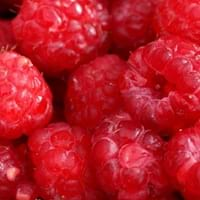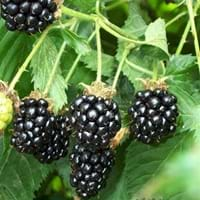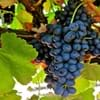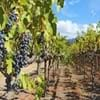Life Span
Perennial
Biennial and Perennial
Origin
Hybrid origin
Hybrid origin
Types
PRIMOCANE RED RASPBERRIES ,FLORICANE RED RASPBERRIES
Not available
Habitat
Forests, Mountains, Tree canopies
Temperate Regions
USDA Hardiness Zone
4-8
6-9
Sunset Zone
A1, A2, A3, 1a, 1b, 2a, 2b, 3a, 3b, 4, 5, 6, 7, 8, 9, 10, 11, 12, 13, 14, 15, 16, 17, 18, 19, 20, 21, 22, 23, 24
Not Available
Habit
Upright/Erect
Prostrate/Trailing
Flower Color Modifier
Bicolor
Bicolor
Leaf Color in Spring
Green
Green
Leaf Color in Summer
Green
Green
Leaf Color in Fall
Green
Green
Leaf Color in Winter
Light Green
Light Green
Leaf Shape
Toothed
Alternate
Plant Season
Spring, Summer, Fall
Spring
Sunlight
Full Sun, Partial Sun
Full Sun
Type of Soil
Loam, Sand
Loam
The pH of Soil
Acidic, Neutral
Acidic, Neutral
Soil Drainage
Well drained
Well drained
Bloom Time
Spring, Summer
Early Spring, Late Winter
Tolerances
Drought
Drought
Where to Plant?
Container, Ground, Pot
Ground
How to Plant?
Suckers
Vegetative Reproduction
Plant Maintenance
Medium
Medium
Watering Requirements
Average Water Needs
Keep the Soil well drained, Requires regular watering
In Summer
Lots of watering
Lots of watering
In Spring
Moderate
Moderate
In Winter
Average Water
Average Water
Soil pH
Acidic, Neutral
Acidic, Neutral
Soil Type
Loam, Sand
Loam
Soil Drainage Capacity
Well drained
Well drained
Sun Exposure
Full Sun, Partial Sun
Full Sun
Pruning
Remove damaged leaves, Remove dead branches, Remove dead leaves
Prune prior to new growth
Fertilizers
All-Purpose Liquid Fertilizer
All-Purpose Liquid Fertilizer
Pests and Diseases
Red blotch
Anthracnose, Crown rot, Japanese Beetles, Powdery mildew, Rust
Plant Tolerance
Drought
Drought
Flowers
Insignificant
Insignificant
Flower Petal Number
Single
Single
Foliage Texture
Medium
Medium
Foliage Sheen
Matte
Matte
Attracts
Birds, Butterflies
Bumblebees, Butterflies, Caterpillar, Flying insects
Allergy
Abdominal pain, breathing problems, Diarrhea, Eczema, Fainting, Itchiness, Nausea, Vomiting, wheezing
Not Available
Aesthetic Uses
bank hedging, Cottage Garden, Slopes hedging
Not Available
Beauty Benefits
Not Available
Not Available
Environmental Uses
Air purification
Air purification
Medicinal Uses
anti-inflammatory, Anti-oxidant, Cancer, Improve heart health, Liver Protection, Skin Whitening and Pigmentation Medicine, Weight loss
Antioxidants, Digestion problems, Iron, Phosphorus
Part of Plant Used
Fruits, Leaves, Root
Flowers, Leaves, Root, Stem
Other Uses
Jam, Jelly, Used As Food, Used for its medicinal properties
Animal Feed, Beneficial species for attracting pollinators, Can be boiled and seasoned, pickled, Jam, Jelly, Tea-like beverage can be brewed, Used as Ornamental plant, Used for its medicinal properties
Used As Indoor Plant
No
No
Used As Outdoor Plant
Yes
Yes
Garden Design
Edible, Fruit / Fruit Tree, Hedges
Edible, Fruit / Fruit Tree, Groundcover
Botanical Name
RUBUS 'Autumn Bliss'
Rubus canadensis
Common Name
Red Raspberry
Thornless Blackberry
In Hindi
रूबस idaeus
Thornless blackberry
In German
Himbeere
Rubus canadensis
In French
Rubus idaeus
Rubus canadensis
In Spanish
Rubus idaeus
Rubus canadensis
In Greek
σμέουρο
Rubus canadensis
In Portuguese
Rubus idaeus
Rubus canadensis
In Polish
Rubusidaeus
Bezkolcowej Blackberry
In Latin
Rubus idaeus
Thornless Rubus
Phylum
Magnoliophyta
Magnoliophyta
Class
Magnoliopsida
Magnoliopsida
Clade
Angiosperms, Eudicots, Rosids
Angiosperms, Eudicots, Rosids
Tribe
Rubeae
Not Available
Subfamily
Rosoideae
Not Available
Number of Species
Not Available
Not Available
Importance of Red Raspberry and Thornless Blackberry
Want to have the most appropriate plant for your garden? You might want to know the importance of Red Raspberry and Thornless Blackberry. Basically, these two plants vary in many aspects. Compare Red Raspberry and Thornless Blackberry as they differ in many characteristics such as their life, care, benefits, facts, etc. Every gardener must at least have the slightest clue about the plants he wants to plant in his garden. Compare their benefits, which differ in many ways like facts and uses. The medicinal use of Red Raspberry is anti-inflammatory, Anti-oxidant, Cancer, Improve heart health, Liver Protection, Skin Whitening and Pigmentation Medicine and Weight loss whereas of Thornless Blackberry is Antioxidants, Digestion problems, Iron and Phosphorus. Red Raspberry has beauty benefits as follows: Not Available while Thornless Blackberry has beauty benefits as follows: Not Available.
Compare Facts of Red Raspberry vs Thornless Blackberry
How to choose the best garden plant for your garden depending upon its facts? Here garden plant comparison will help you to solve this query. Compare the facts of Red Raspberry vs Thornless Blackberry and know which one to choose. As garden plants have benefits and other uses, allergy is also a major drawback of plants for some people. Allergic reactions of Red Raspberry are Abdominal pain, breathing problems, Diarrhea, Eczema, Fainting, Itchiness, Nausea, Vomiting and wheezing whereas of Thornless Blackberry have Not Available respectively. Having a fruit bearing plant in your garden can be a plus point of your garden. Red Raspberry has showy fruits and Thornless Blackberry has showy fruits. Also Red Raspberry is not flowering and Thornless Blackberry is not flowering . You can compare Red Raspberry and Thornless Blackberry facts and facts of other plants too.





